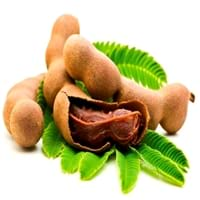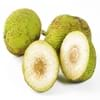Health Benefits
Boosts immune system, Boosts respiratory health, Cancer prevention, Digestive aid, Piles treatment
Arthritis prevention, Cancer prevention, Gout treatment, Heart care
General Benefits
Beneficial in improving nerve function, Protects against parasites and worms, Relieves pain
Anti-inflammatory properties, Boosts immune system, Controls blood pressure, Controls blood sugar levels, Cures fever, Digestive aid, Sore throat treatment
Skin Benefits
Anti-aging benefits, Brightens and lightens complexion, Exfoliates skin, Hydrates skin, Treatment of dark spots
Reduces wrinkles, Treatment of acne
Hair Benefits
Prevents hair loss
Promotes longer and healthier hair, Shiny hair
Allergy Symptoms
Abdominal pains, Breathing difficulty, Dizziness, Eczema, Fainting, Hives, Itching, Nasal congestion, Swelling of face, Tingling sensation in mouth, Vomiting
Anaphylaxis, Digestive Problems, Itching, Skin Rashes, Swelling
Side Effects
Decrease in blood sugar levels, Induces acid reflux, Allergic reaction, Tooth decay, May form gallstones
Allergic reaction
Best Time to Eat
Along with meal, As a snack in the late afternoon, Don't consume at night and before bed, Strictly avoid empty stomach
As a snack in the late afternoon, Don't consume at night and before bed, Eat the fresh ones, avoid mixing with any other foods, don't eat after meal., Morning time (before lunch)
Vitamin B5 (Pantothenic Acid)
Vitamin C (Ascorbic Acid)
Vitamin K (Phyllochinone)
Calories in Fresh Fruit with Peel
Not Available
Calories in Fresh Fruit without Peel
Not Available
Calories in Frozen Form
Not Available
Calories in Dried Form
Not Available
Calories in Canned Form
Not Available
Not Available
Season
Spring, Summer
Autumn, Summer, Winter
Varieties
PKM 1, Urigam, Hasanur, Tumkur prathisthan, DTS 1 and Yogeshwari
Green Anjou, Red Anjou, Bartlett, Red Bartlett, Bosc, Comice, Concorde, Forelle, Seckel and Starkrimson
Color
Brown, Reddish-brown
Yellow
Shape
Curving Cylinder
Pear
Taste
Sour-Sweet
Crunchy, Sweet
Origin
Africa
China, Japan
Soil Type
Loam, Sandy, Sandy loam, Well-drained
Clayey, Loamy, Sandy
Climatic Conditions
Humid to dry, Rainfall, Warm to hot climate
Cold, Hot, Without frosts
Facts about
- Tamarind is used to prevent body odor.
- African children use the tamarind seeds in games.
- No cases of tamarind toxicity or allergy reported till date.
- The first pear tree was planted in North America in 1620.
- The Chinese considered the pear fruit to be a symbol of immortality.
- This fruit was used as a natural remedy against nausea in ancient Greece.
Other Countries
Africa, Australia, Brazil, China, Mexico, Nigeria, Sudan, Taiwan
Argentina, Belgium, India, Italy, Japan, South Africa, Spain, Turkey, United States of America
Top Importer
United States of America
Europe
Top Exporter
Thailand
China
Botanical Name
Tamarindus indica
Pyrus communis
Synonym
Tamarindo, tamarindus
Not Available
Subkingdom
Tracheobionta
Tracheobionta
Division
Magnoliophyta
Magnoliophyta
Class
Liliopsida
Magnoliopsida
Species
Tamarindus indica
P. communis
Generic Group
Tamarind Sub
Rose
Difference Between Tamarind and Pear
We might think that Tamarind and Pear are similar with respect to nutritional value and health benefits. But the nutrient content of both fruits is different. Tamarind and Pear Facts such as their taste, shape, color, and size are also distinct. The difference between Tamarind and Pear is explained here.
The amount of calories in 100 gm of fresh Tamarind and Pear with peel is Not Available and 57.00 kcal and the amount of calories without peel is 239.00 kcal and Not Available respectively. Thus, Tamarind and Pear belong to High Calorie Fruits and Low Calorie Fruits category.These fruits might or might not differ with respect to their scientific classification. The order of Tamarind and Pear is Fabales and Rosales respectively. Tamarind belongs to Fabaceae family and Pear belongs to Rosaceae family. Tamarind belongs to Tamarindus genus of Tamarindus indica species and Pear belongs to Pyrus genus of P. communis species. Beings plants, both fruits belong to Plantae Kingdom.









